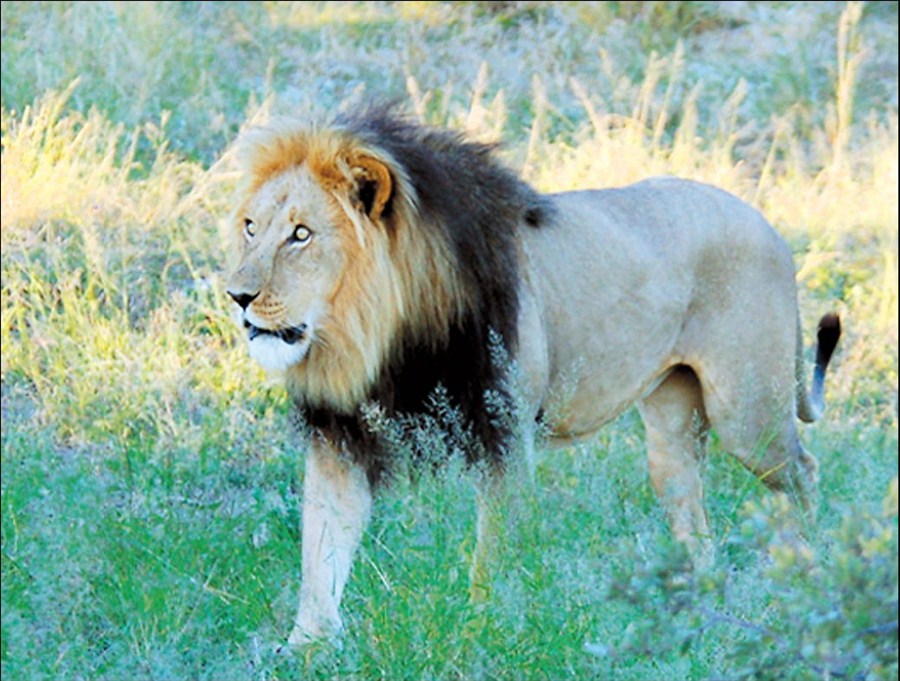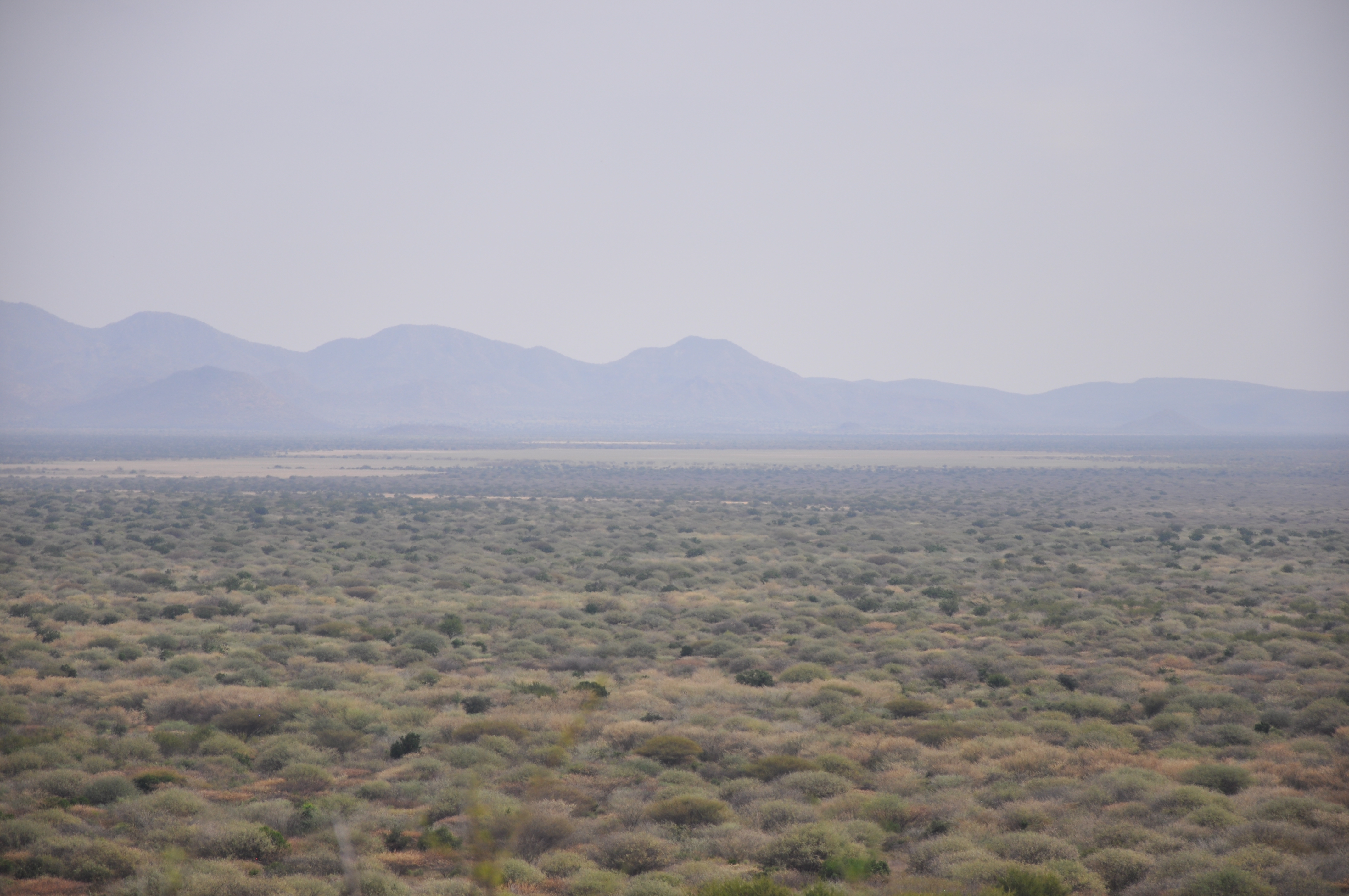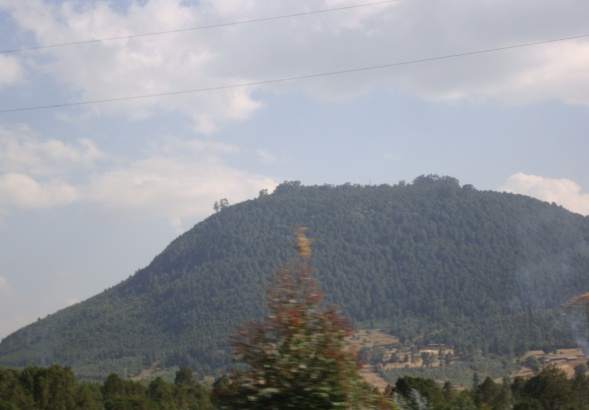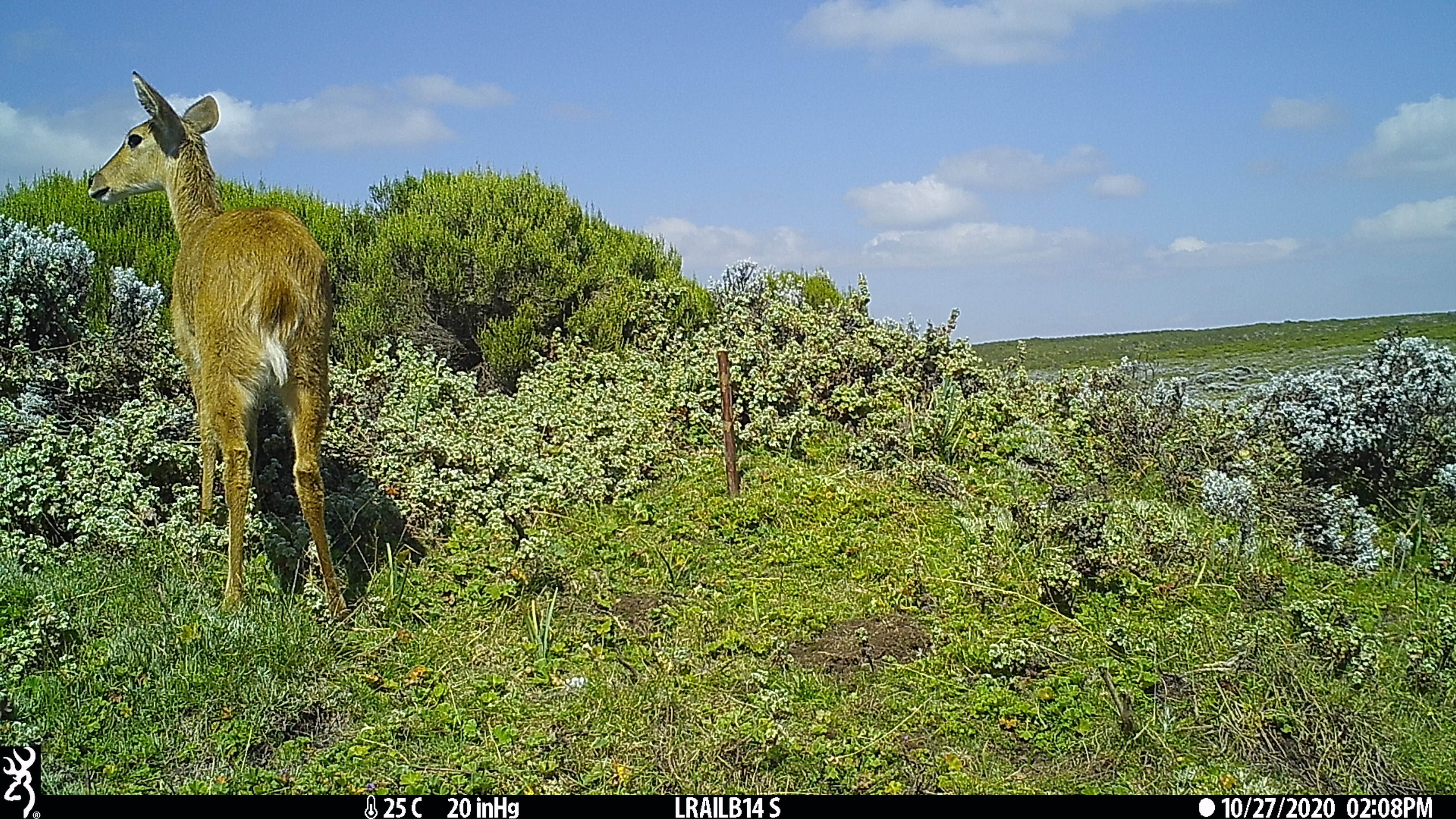WEL COME
TO
BALE BRANCH
Bale Brach is one of the nine Brach of Oromia Forest and wild life Enterprise (OFWE) structure. Branch (BB) was established with regulation number by regulation number 122/2001 as one of the nine braches established under Oromia Forest and wildlife enterprise (OFWE) having the name of Bale branch.
Bale branch administering Total hec. 566,266.2 forest which is hec. 437,264.62 (%77.22), is natural forest and hec 1660.96 (% 0.30) is plantation and 127,340.62 (% 22.48) hec is wild life conservations Area.
The Branch (BB) office is located in Goba town Regional State oromia It is approximately 444 km south-eastern Ethiopia of Addis Abeba, Ethiopia. Branch operates four districts, Aloeshee Batu, Gooro Bale,Kubayyu & mannangetu
The Bale Mountains National Park is located in southeastern Ethiopia, 400km southeast of Addis Ababa and 150km east of Shashemene in the Oromia Regional National State. It belongs to the Bale-Arsi massif, which forms the western section of the southeastern Ethiopian highlands.
Nominated in 2009 to UNESCO’s World Heritage Site Tentative List, the Bale Mountains are Ethiopia’s best-kept secret. Dominating the southeastern edge of the Rift Valley highlands, these mountains encompass the largest expanse of Afroalpine habitat in the world. It has been estimated that if conservation efforts in the Bale Mountains are not successful and people continue to exploit the resources in an unsustainable way, more species of mammal would become extinct than in any other area of equivalent size on the planet.
Ethiopia is one of the top 25 biodiversity-rich countries in the world, and the Bale Mountains have one of the highest incidences of animal endemism of any terrestrial habitat on earth; the park itself holds 26 percent of Ethiopia’s endemic species. In addition to a wealth of endemic, unique and endangered mammals, Bale Mountains is home to a wide range of bird species. Rated by the African Bird Club as the number four birding spot in Africa, the Bale Mountains are home to over 300 species of birds – six of which are endemic to Ethiopia and 11 to Ethiopia and neighboring Eritrea.
The Bale Mountains are an area of supreme importance for numerous reasons. They sustain the life of many endemic and endangered species. Additionally, over 12 million people and their livestock – in the southeast region of Ethiopia, northern Kenya and Somalia – rely on the water that originates from the Bale massif.
The Bale Mountains National Park offers opportunities for unsurpassed mountain walking, horse trekking, and scenic driving. It also presents the chance to view many of the endemic mammals that reside within the park, specifically the mountain nyala and Ethiopian wolf, as well as birds such as the wattled crane and bearded vulture.
However, perhaps the primary attraction of the Bale Mountains is the simple escape it offers from city life; into peace, serenity and beauty.
History
In contrast to other parts of Ethiopia, very little was written about the Bale Mountains prior to the 1950s. This is despite the fact that Goba (a central town within the mountains) was connected to Addis Ababa by a telegraph line in 1931; was served with Ethiopian Airlines DC-3 aircrafts prior to the 1950s; and that the brief period of Italian government (1935-1941) reached the region with stations in Goba, Dinsho and Delo-Mena.
As records begin to appear at the beginning of the 20th century, the Bale Mountains were largely uninhabited. The first recorded visit was by the German naturalist and explorer Carlo Von Erlanger, who reached the Bale Mountains between 1899 and 1901, and documented the existence of the giant molerat. Thereafter, a Frenchman, the Viscompte du Bourg, spent two months in Goba in 1901 hunting elephant to the south and travelling around the mountains. He recorded the existence of elephant and buffalo in the Harenna forest, and commented on the ivory hunting of the area – primarily by mounted horsemen using guns.
Bale Mountains National Park contains a spectacularly diverse landscape. The high altitude, afro-montane Sanetti Plateau rises to over 4,000m and includes the highest peak in the southern Ethiopia highlands. This undulating plateau is marked by numerous glacial lakes and swamps and surrounded by higher volcanic ridges and peaks. The southern slopes are covered by the lush and largely unexplored Harenna Forest. The park is 2,150km2 and is comprised of five major vegetation zones.
- The Northern grasslands :– Spanning the Web and Danka Rivers, are situated to the south of the Bodeti Mountain and north of Adelay ridge, and northwest of Dinsho. The altitude of the area ranges from 3,000m to 3,500m, pushing the upper limit for tree growth. The land is flat, dominated by swamp grasses and sedges, especially of the Cyperus and Scirpus genera and becomes muddy during the rainy season. Higher areas are scrubby with African or wild wormwood (Artemesia afra) and Cape gold (Helichrysum splendidum), one of more than ten species of everlasting flower found in Bale. Both are important sources of food for the mountain nyala and sources of shelter for other animals. Hagenia abyssinica trees flower from November through February; female trees boast an impressive red bloom. Wild fennel also grows here.
- Juniper Woodlands (Park Headquarters) :–The juniper woodlands cover the northern slopes of the Bale massif, reaching from Dodola to Dinsho. These woodlands are under intense pressure from grazing, inhibiting the growth of new trees. Hagenia abyssinica and African juniper (Juniperus procera) dominate the woodlands. At the upper limit of their distribution, the juniper trees are smaller than in other parts of the park. In contrast, the Hagenia trees can grow to be massive, flowering from November to February. St John’s wort (Hypericum revolutum) is also common in the woodlands, growing as shrubs near the lower edge and reaching a height of 5m in the upper tree line. They are easily recognizable by their bright yellow flowers, which bloom throughout the year and are the major source of nectar for the honey produced in the area. Also present is the only indigenous rose to Africa (Rosa abyssinica), which has fragrant, white flowers.
- Afroalpine Meadows (Sanetti Plateau & Upper Web Valley) :— Due to the altitude, plant diversity here is low. However, one of the notable plant species is the giant lobelia found from 3,100m to 4,377m growing to a maximum height of 6m. On the plateau stands Tulu Dimtu at 4,377m. This is the second tallest mountain in Ethiopia, and the tallest in Bale.
Found at staggeringly high densities in Afroalpine meadows (average of 2,500kg per km2) Afroalpine rodents (mice, rats, and molerats) dominate the cold and seemingly barren plateau. Look specifically for the giant molerat* (endemic to the Bale Mountains), rock hyrax and Starck’s hare*. The plateau is also home to Ethiopian wolves* and a trip to the plateau all but guarantees a sighting of this charismatic carnivore. The plateau hosts a large number of raptors that feed on the sizeable rodent population.
- Erica Belt: Moorlands and Forest :– Located immediately above the tree line, from 3,400m to 3,800m, is a belt of heather made up of species of the Erica and Phillippa genera, dominated specifically by Erica arborea (tree heath), a shrub common throughout the world that grows to staggering proportions in Bale – up to 5m on the edge of the tree line. These forests are a fairytale wood of giant heather dressed in moss and old man’s beard (a lichen). These trees are highly endangered and quite rare in Ethiopia. The most accessible example of this type of forest is on the road that crosses.
- Harenna Forest :– The southern and largest area of the park consists of the second largest forest in Ethiopia: the Harenna forest. Along with the adjacent State- and community-managed forest outside the park, it constitutes an area of over 4,000km2. It is also the largest cloud forest in the country. The road from the plateau takes you down the Harenna escarpment and into the forest. Mountain bamboo grows within the forest, particularly on steep slopes. Rubus steuderi, a member of the blackberry family, grows along the road from April to June. The upper area of the Harenna forest is wet cloud forest with an extensive bamboo belt, while the lower parts are drier mountain forest. At about 2,200m as the slopes become gentler, larger trees of up to 30m tall appear, and the canopy closes. These include fern pine (Podocarpus gracilior) and fig trees (Ficus spp.) of massive girth. Branches are covered with dense epiphytes. In the lower areas of the forest, wild forest coffee (Arabica sp.) grows.
Geology & Glaciation
The Bale Mountains were formed prior to the creation of the Rift Valley, from lava outpourings, which covered all underlying rock formations between 38 and 7 million years ago. The rocks of the volcanic outpourings are predominantly trachytes, but also include rhyolites, basalts and agglomerates, and tuffs. The Bale highlands area consists of a vast lava plateau with at least six volcanic cones, each more than 4,200m. These cones have been considerably flattened by repeated glaciations.
There have been at least two glacial periods in the history of the mountains. These specific mountains were glaciated as little as 2,000 years ago. During the last ice age, the Bale Mountains were one of the most extensively glaciated areas in Ethiopia, with a total of approximately 180km2 of ice. There was a 30km2 ice cap around the peak of Tulu Dimtu on the Sanetti plateau and individual glaciers of considerable thickness reached down to 3,200m. As a consequence, the landscape as we see it today is the lava outpourings modified by over 20 million years of erosion by water, wind and ice.
There are certain geological features that remain an enigma to geologists and glaciologists, such as the striations (or boulder grooves) that appear on shallow hillsides on the Sanetti plateau. Boulder grooves, till ridges and numerous glacial valleys, such as the Togona Valley on the northeastern slopes of the Sanetti plateau, provide evidence of the ice age effects on the landscape of the Bale Mountains National Park. Until the beginning of de-glaciation (13,000 to 14,000 years ago), the snowline was at 3,700m and the upper tree limit in the Bale Mountains was well below 3,000m. Fluctuations in climate over the last historical period, including the last 3,000 years, have dramatically affected vegetation and other biodiversity in the highlands.
a total of 40 rivers rise in the national park area, contributing to five major rivers: the Web, Wabe Shebele, Welmel, Dumal and Ganale. Additionally, the Bale massif is the source for many springs in the lowlands, which are of paramount importance as they are the only source of water year-round.
Wild Life
The Bale Mountains are a critically important area for a number of threatened Ethiopian endemic species. The Afroalpine area is home to over half of the global population of Ethiopian wolf, the rarest canid in the world, whereas the northern juniper-Hagenia woodlands harbour the largest population of the endemic and similarly endangered mountain nyala.
Less obviously 26% of Ethiopia’s endemic species (including one primate, one bovid, one hare, eight species of rodent, and the entire global population of the giant molerat) can be found in the park. Six of the 18 birds endemic to Ethiopia can be found in Bale Mountains National Park, as well as 11 of the 14 birds endemic to Ethiopia and Eritrea.
There are also several rare and endemic amphibian species found only in Bale, as well as over 1,300 species of flowering plants, 163 of which are endemic to Ethiopia (12 percent), and 23 to Bale alone (14 percent of Ethiopia’s endemic plants). It is widely known, the park has a significant number of species, in particular amphibian & reptile species, are present in Bale but have yet to be found.
- Mammals 78
- Reptiles 12
- Amphibians 17
- Birds 310
- Flowering plants 1,300
Here are some of the most notable and most easily spotted mammals of the park:
Ethiopian Wolf
The Ethiopian wolf is the rarest canid in the world, and Africa’s most threatened carnivore. The closest living relatives of the Ethiopian wolf are grey wolves and coyotes. The Ethiopian wolf ancestors crossed over from Eurasia during the Pleistocene period less than 100,000 years ago, when sea levels were lower and Africa and the Middle East were connected. At the time, the highlands of Ethiopia were predominantly Afroalpine grasslands and heathlands, and these habitats were ideal for many small mammals, particularly grass rats and molerats. This Afroalpine environment and its abundant rodents drove the Ethiopian wolf evolution morphologically into a specialized rodent hunter with an elongated muzzle, long legs and a distinctive reddish coat, with white markings and a darker tail tip. Male Ethiopian wolves weigh between 14 and 20kg, while the weight of adult females ranges from 11 to 16 kg.
Mountain Nyala
The mountain nyala was the last large ungulate to be discovered in Africa. They are found only in Ethiopia, south of the Rift Valley. Once widely distributed in the southeast highlands of Ethiopia, their range and population have suffered a dramatic decline over the last several decades due to habitat loss as a result of agricultural expansion and killing. There are approximately 3,700 nyala remaining in the Bale Mountains, 30 – 40 percent of which are found in the park alone. This is the majority of the population with only very small pockets found in nearby mountain ranges.
Rock hyrax
When hyraxes were first classified, they were grouped with rodents because of the superficial resemblance. They were then grouped with elephants because early fossils of both lineages were similar. More recently, these small, dark-colored and tailless animals have been separated to form their own order.Over 25 million years ago, the 11 hyrax genera were among the most successful herbivores in Africa.
Starck’s Hare
Endemic to Ethiopia, Starck’s hare is a very important part of the ecosystem in Bale, as well as an important prey for the endangered Ethiopian wolf. Starck’s hare are found on both sides of the Rift Valley from 2,140m to 4,000m in grasslands and Afroalpine moorlands. The density ranges from about 13 per km2 in the dry season to about 18 per km2 in the wet season. Festica grass is the most important source of food for Starck’s hare.
Bale Monkey
Endemic to Ethiopia, the Bale monkey is distinctive for its white chin and cheeks and black face. They were discovered quite recently, in 1902, hence relatively little is known about their natural history. According to recent findings, the distributional range of the Bale Monkey extends between 2,200m and 3,400m.
Menelik’s Bushbuck
Menelik’s bushbuck is an endemic subspecies of bushbuck. The male Menelik’s bushbuck is much darker than the male common bushbuck. Menelik’s bushbuck are most often seen alone, except when adult females are accompanied by their offspring for up to one year after birth. They are not territorial. Like the mountain nyala, the males carry out elaborate strutting displays to establish hierarchies.
Giant Molerat
Living in extremely high altitudes of the Afroalpine ecosystem, the giant molerat is endemic to the Bale Mountains. They reach staggering densities on the Sanetti plateau of as many as 5,000 molerats in 1km2. They are most frequently spotted either foraging surreptitiously around the entrances of their burrows, or shoveling soil from a newly excavated hole. Giant molerats are solitary, but their wide-ranging burrow systems overlap with other individuals. Each burrow system includes tunnels of over 90m, covering an area of up to 400m2. There is one functional nest per system, one entrance per nest, and nesting material consisting exclusively of grasses, woven into a hollow ball.
Rodent Community
Almost one third of the 47 mammals found in Bale Mountains National Park are rodents. The rodent community, particularly of the Afroalpine plateau, is a keystone population in the park. They are the natural grazers of the Afroalpine areas, performing important duties of cryoturbation (soil-mixing). At least eight Ethiopian endemic rodent species have been identified within the park, including the impressive giant mole rat.
Birds
Rated by the African Bird Club as the number four birding site in Africa, the Bale Mountains National Park is home to 310 species of birds. Furthermore, over 170 migratory birds have been recorded within the park. The Bale Mountains are home to almost every highland Abyssinian and Ethiopian endemic.
Over 863 species of birds have been registered in Ethiopia, representing approximately 9.5 percent of the world’s birds and 39 percent of the birds in Africa. 18 of these birds are endemic to Ethiopia, while a further 14 are endemic to Ethiopia and neighboring Eritrea.
The Bale Mountains are the best location in Ethiopia to spot the wattled crane, moorland and chestnut-naped francolins, and spot-breasted plover. There are also relict populations of three primarily Eurasian species that breed nowhere else in sub- saharan Africa: the ruddy shelduck, golden eagle and red-billed chough. Due to the diversity and density of rodents, the Bale Mountains are also an extremely important area for resident as well as wintering and passing raptors. Bale is an exquisite location for longtime birders as well as inexperienced visitors interested in seeing rare and endemic birds.
Endemic birds of the Bale Mountains
- Blue-winged Goose (Cyanochen cyanoptera)
- Spot-breasted lapwing/plover( Vanellus melanocephalus)
- Yellow-fronted parrot (Poicephalus flavifrons)
- Abyssinian longclaw (Macronyx flavicollis,
- Abyssinian catbird (Parophasma galinieri)
- Ethiopian/Black-headed siskin (Serinus nigriceps)
Bale Mountains National Park is the ultimate destination for hikers, wildlife watchers, culture and nature enthusiasts, bird watchers and more! Explore one of the highest parks in Africa by horseback, go fishing or experience an authentic community trying local coffee and honey! One of the best sites to spot the rare and endangered Ethiopian Wolf is on the spectacular Sanetti Plateau as the sun rises.
Topography
Bale is one of the 18 administrative zones in Oromia national regional state which is located in south-eastern Ethiopia. It has borderlines with Arsi, Guji, West and East Hararge zones as well as Somali and Southern Nations and Nationalities and Peoples’ Regional States. It has 18 districts out of which nine are located in highland agro-ecology whereas the remaining nine are located in mid and lowland respectively. The zone is found in Southeast of Oromia Regional State that extends from 5o 22’S – 8o 08’N latitude and 38o 41’W – 40o 44’E longitudes. Bale zone has four agro-ecological zones namely extreme highlands 0.04%, highland 14.93%, midland 21.5%, and lowland 63.53%. The altitude ranges from below 1000 in the lowlands to 4377m above sea level in the highlands. About 10.6% of the land is arable land used for crop production, 24.6% grazing land, 41.8% forest, and others 25% (BZADO, 2012). Most of the districts in Bale highlands are known for their bimodal rainfall patterns and are therefore highly suitable for agriculture. They have two distinct seasons i.e. Belg (from March to July) and Meher (from August to January). The area receives an average annual rainfall of 400-2500mm and min and max temp 3.50 c and 350 c and altitude ranges from 300 to 4377masl.
Forest and wild life Resource
Bale is one of the areas covered with extensive Natural Forests. forest under OFWE is found in south Easter part of the country important for the national economy and community living around the forest used trees f of time in traditional ways. Currently forest is considered as strategic option to (CRGE) goals, by Protection and rehabilitation of forests for their economic and ecosystem services including as carbon stocks. OFWE as organization is working by setting a sustainable use of forest and wildlife to contribute to economic development of the country and branch also share the objectives to achieve the targeted goal forestation, reforestation, conservation of natural forests and sustainable use of forest goods and NTFP as by establishing forest industries. Bale established wild life conservation area in the forest concession of the branch Districts Operated Under Aloshe Batu and Goro Bale districts.
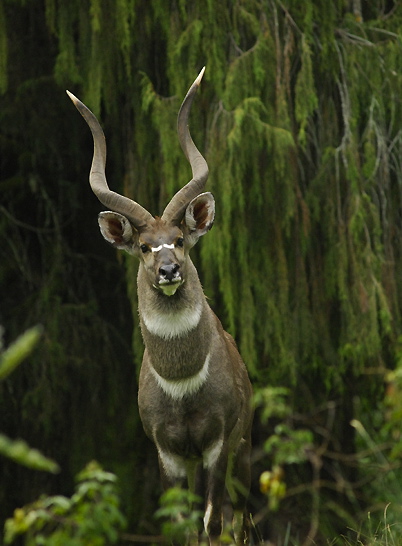
Mauntain nyala (Gadamsa Baddaa)
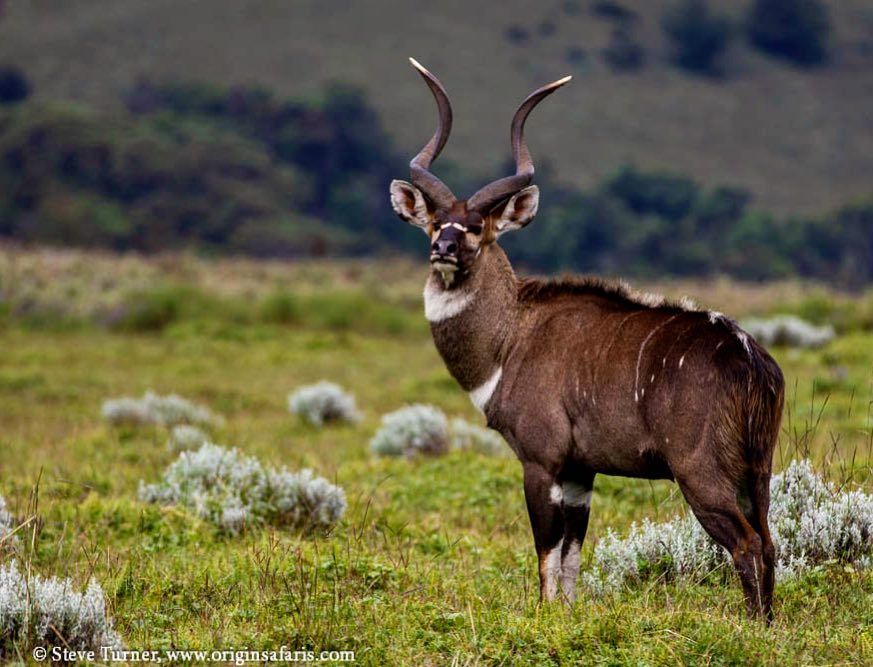
Mauntain nyala (Gadamsa Baddaa)
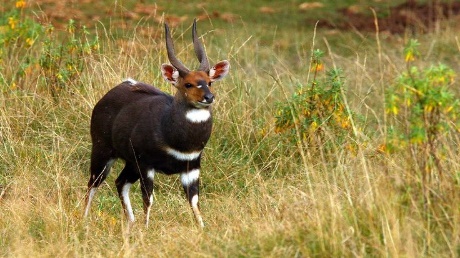
Minnelick bushback(Borofa)
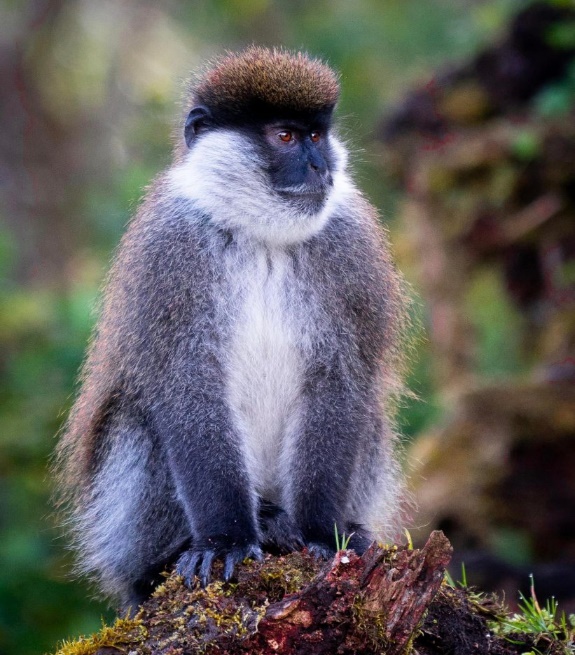
Vervet monkey(Qamalee)
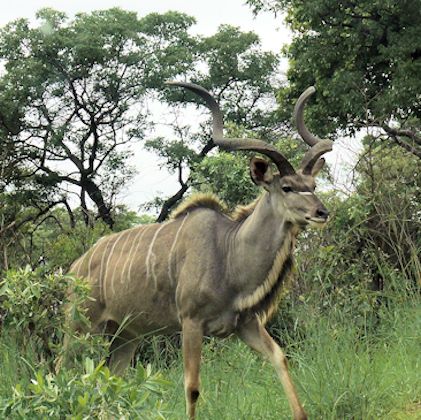
Greater kudu(Gadamsa Gamojjii Guddaa)
The Products
- Forest Products of the branch
Cupressus Lusitanica
Eucalyptus logs
Construction and fire woods
Eucalyptus timbers
- NTF
- Forest Honey
- Forest coffee
- Essential oil
- Gum and resins

